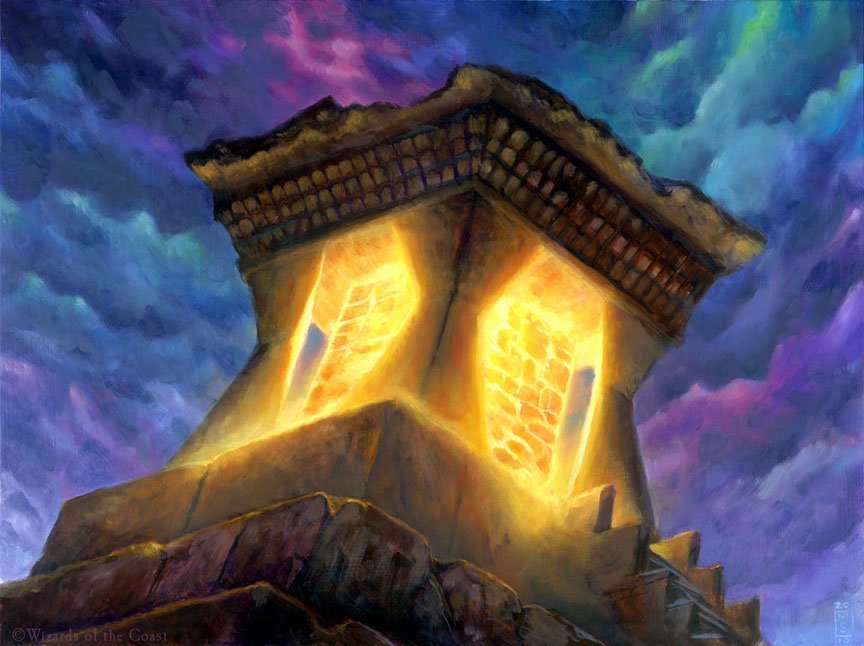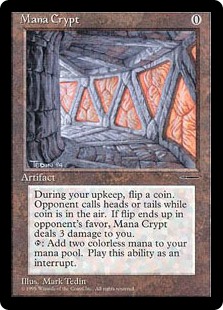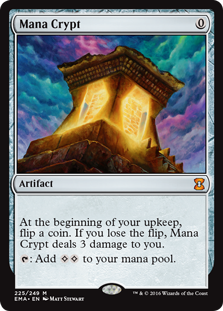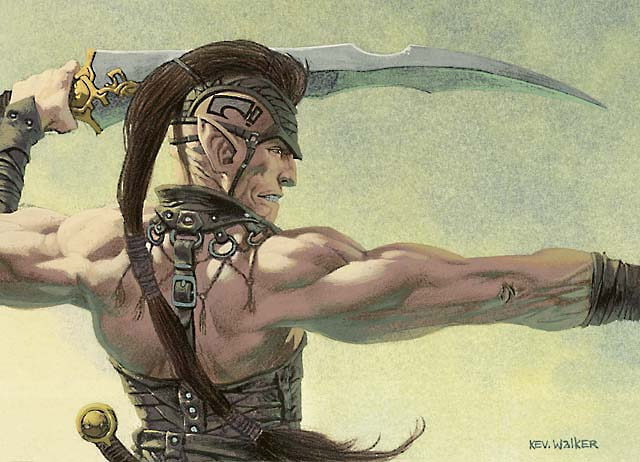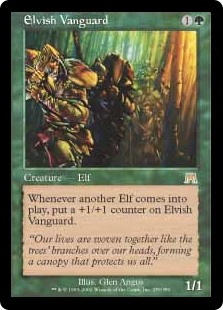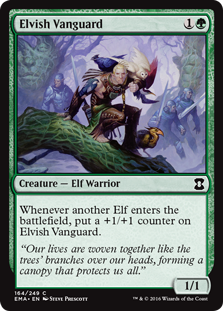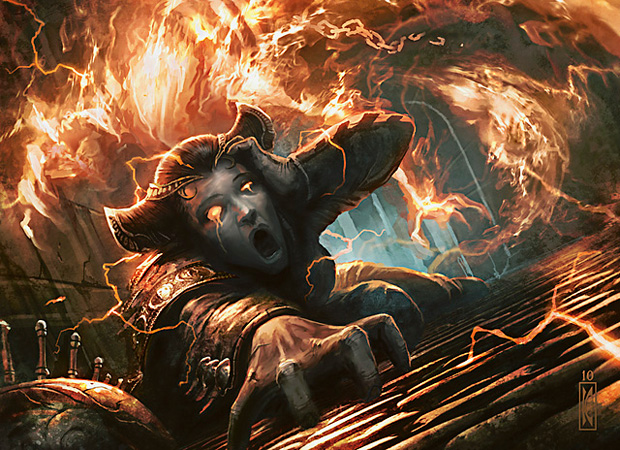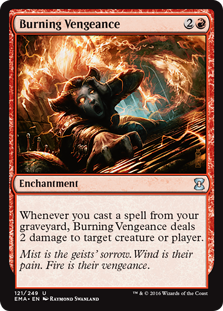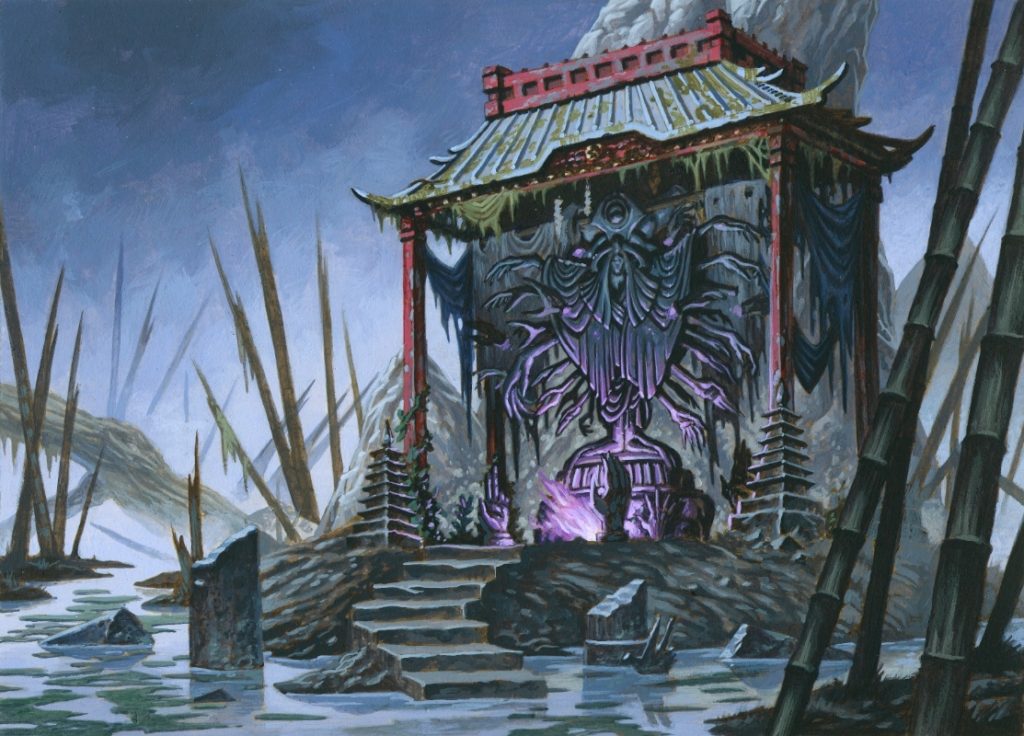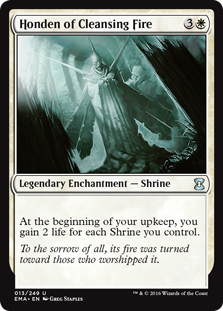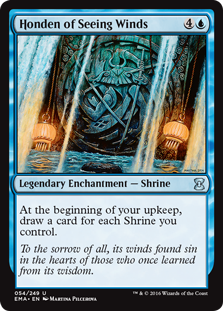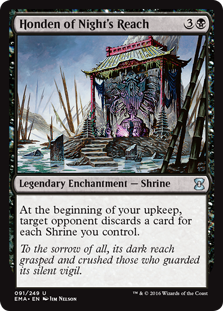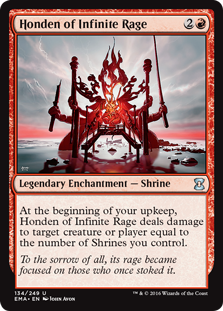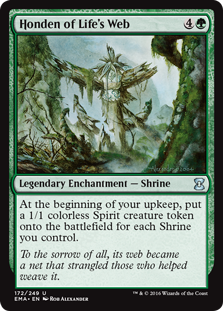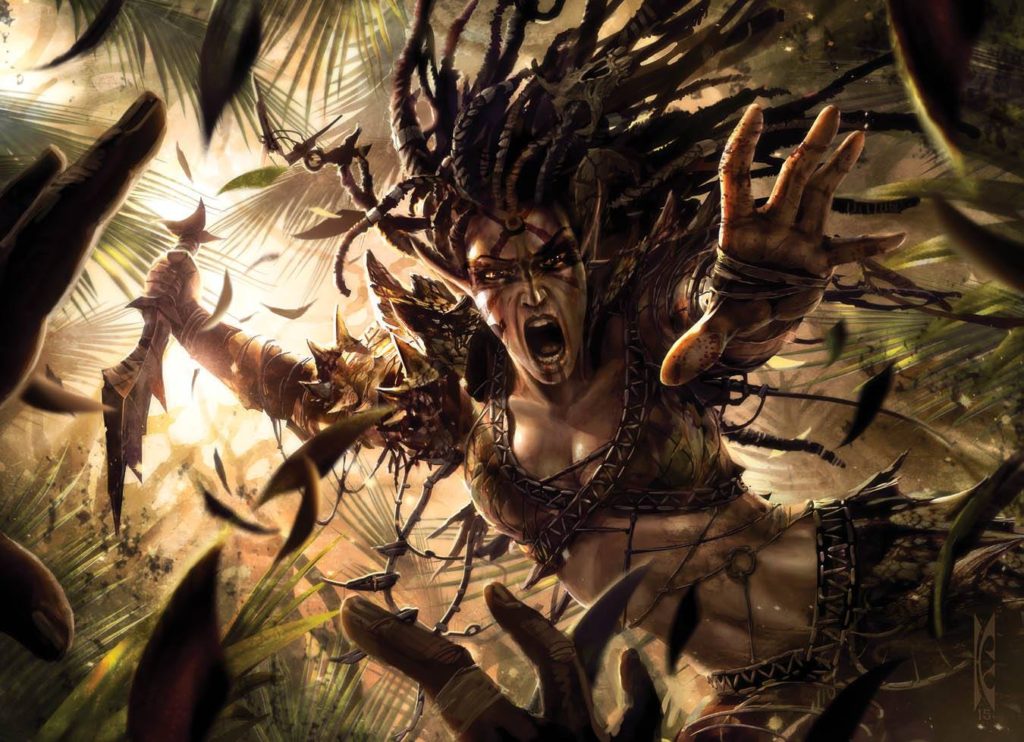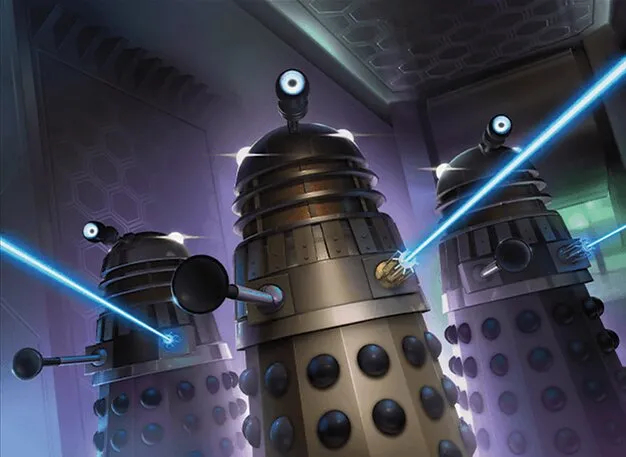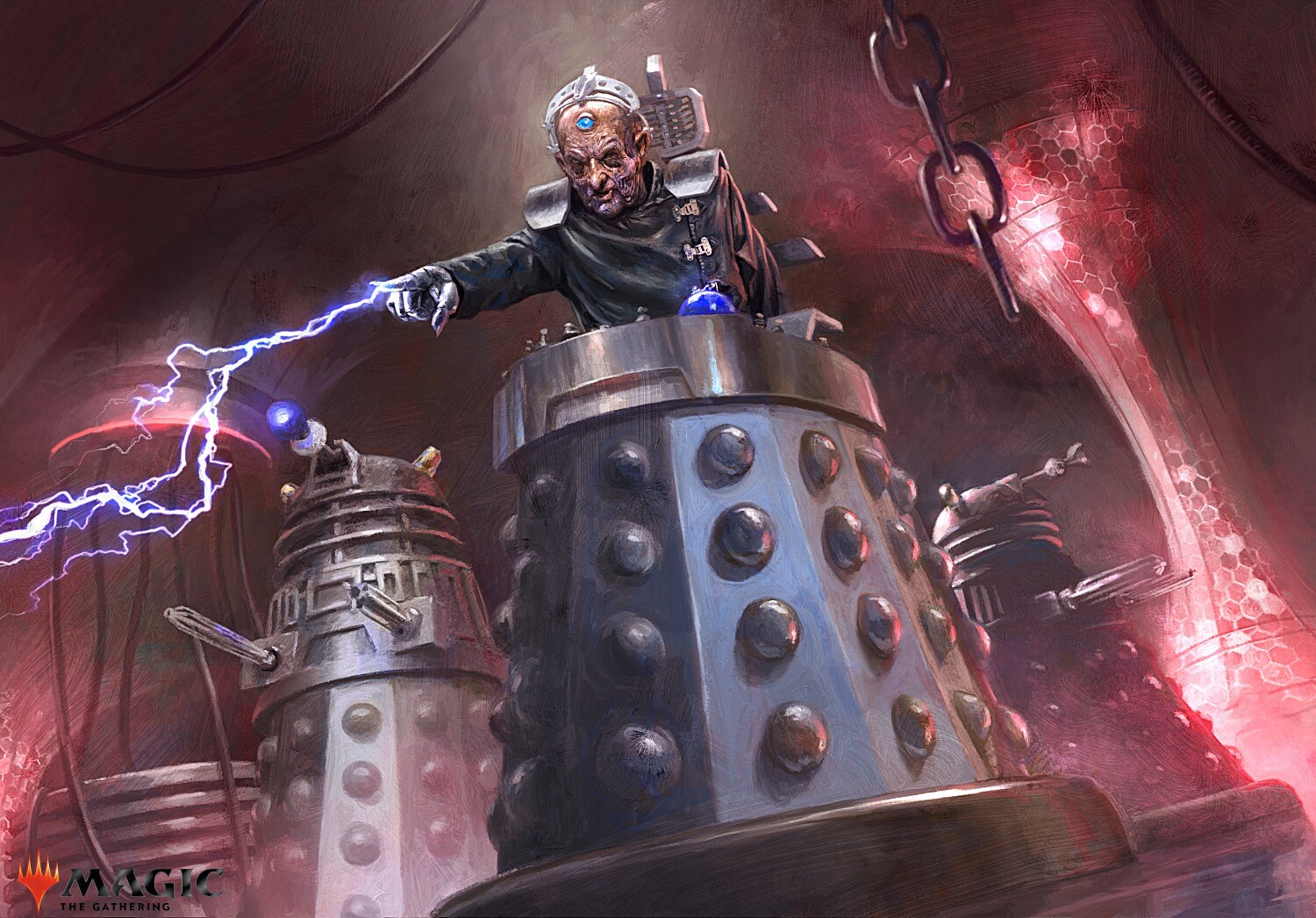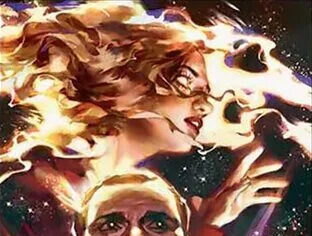Optimum Jank – Eternal Cards For the Casual Player
The Best of The Rest
Eternal Masters is finally here and there’s a lot to be excited for. Everyone is ready to play the Booster Pack Lottery hoping to open any of the set’s marque cards. And what a lottery it is, with the possibilities of opening Jace, the Mind Sculptor, Karakas, Wasteland and Mana Crypt.
Mana Crypt is a particular interesting story: It has only ever seen two unconventional printings before this one. It was initially redeemable through a mail-in coupon offer in the old line of Magic novels and its only other printing was a Judge Programme promotional card. This is the first time that players will be able to play with Mana Crypt in an actual non-Cube Magic set. As you can imagine, its extreme rarity combined with its popular demand means that it caries a pretty hefty price tag. A price tag players are hoping will come down with this fantastic new printing.
What does that mean for you, the Casual Magic player? Is Mana Crypt a card you should play? The answer is unequivocally yes, because fast mana in Magic is pretty broken. But is it the card you can afford? Is it a card you need? Do you really need to oppressively crush your friends in casual games with powerful cards like the Crypt?
The strongest aspect of Eternal Masters is that it is truly offering something for everyone. In this article, I’d like to highlight a number of cheaper but nevertheless interesting and exciting reprints you can pick up. These certainly won’t be close to the most powerful cards in the set, but they’re all fun cards to build around and definitely worth considering when brewing.
Anything but Common
Our first card in the spotlight is Elvish Vanguard. With its only other printing as a Rare way back in Onslaught, Elvish Vanguard has been downgraded to a measly Common in Eternal Masters, which will simply crush its current price of $3 USD.
Elvish Vanguard is a pretty fun card because it is an Elf version of another fan favourite: Champion of the Parish (which grows larger whenever a Human enters the battlefield). The advantage of Champion is its lower mana cost (W vs Elvish Vanguard’s 1G) meaning it has the capability to start swinging on turn 2 for two points of damage. What I like about the Vanguard, however, is that Elves tend to “go wide” faster than almost any other tribe in Magic. While it is not uncommon to have a 6/6 Champion of the Parish with a few Humans backing it up by turn six, it isn’t outside the realm of possibility to have a 12/12 Elvish Vanguard with a ridiculous amount of Elves backing it up by turn six.
Are there more broken things one can do with Elves? Absolutely. Elves are so powerful that one can build competition worthy decks in Pauper, Legacy and sometimes even Modern. The number of broken combos one can power out with Elves certainly overshadows a pump/boost plan with Elvish Vanguard, but the tactic is still a fun one and something that you can certainly build around to challenge your friends with.
What I like most about Elvish Vanguard is the possibility of his being a double edged sword. Unlike Champion of the Parish which only looks for Humans that enter under your control, Elvish Vanguard grows whenever any Elf enters the battlefield. This means that if your opponents are playing Elves as well, he’ll get bigger whenever they play an Elf spell… which sounds great! They play Elves and my Vanguard gets bigger?! Sign me up! Well, remember: If your opponent is playing a Vanguard as well, their Vanguard will benefit from your Elves too. Something to keep in mind during the Vanguard mirror matches.
As a final incentive, this is the first time this card has been printed in the new M15 border and sports some fantastic new art by Steve Prescott (which I unfortunately could not find at a higher resolution). If nothing else, this is a fun and modernly beautiful addition to consider in any type of tribal Cube, Pauper or Commander deck.
Once Again for the Second Time
One of my favourite Uncommons found in Eternal Masters is Burning Vengeance. I returned to Magic when New Phyrexia hit shelves and remember the excitement for the original Innistrad, the set immediately following New Phyrexia. Innistrad was the first set I ever attempted to play Sealed with, but I was still unsure about drafting at that time. I unfortunately missed out on drafting what has since been refereed to as one of the best Draft environments of all time. Even though I never had the chance to play an optimal Burning Vengeance Draft deck, I did open a Sealed pool with two Burning Vengeance and effectively went all-in on the card.
It. Was. Glorious.
If you’ve never played with Burning Vengeance, it is extremely fun and challenging. It requires a solid understanding of your deck and an ability to quickly evaluate multiple lines of play. Constantly evaluating the cards in your hand and the cards in your graveyard and the best way with which to sequence your next few moves makes for very exciting Magic games.
I’m not sure how easy Burning Vengeance will come together in an Eternal Masters draft, but it’s definitely worth a try if you can open it early pack 1.
In terms of casual games, Burning Vengeance works fantastically well with Secrets of the Dead; drawing cards for doing what you already want to be doing is great value. Eternal Masters already pairs Burning Vengeance with Flashback and Retrace, two mechanics that allow you to cast cards from your graveyard. Outside of Eternal Masters, there are a handful of cards that grant Flashback or pseudo-Flashback to cards in your graveyard such as Past in Flames, Snapcaster Mage, Toshiro Umezawa and Goblin Dark-Dwellers. Another neat deck for Burning Vengeance is the Zombie Vengeance deck. There are a surprising number of Zombies that can be cast from your graveyard such as Gravecrawler, Risen Executioner, Scourge of Nel Toth and Skaab Ruinator; all of which will trigger Burning Vengeance or Secrets of the Dead when doing so.
Come Honden
Last but not least, I want to mention the Honden cycle of cards.
The Honden cycle was originally printed in Champions of Kamigawa and has been a staple in many Cubes. The cycle produces a bonus during your upkeep that is multiplied by the number of Honden you control. Controlling one of each Honden would net you 10 life, allow you to draw 5 cards, force your opponent to discard 5 cards, do 5 damage to a target creature or player and put 5 1/1 Spirit tokens onto your side of the battlefield during your upkeep.
So… That’s fun.
Casually speaking, the Honden cycle is a fantastic addition to any Cube that already has a 5 colour theme. For example, I once played a Cube with a 5 colour Allies theme and adding the Honden to that Cube would have given drafters an extra incentive to go deeper into the particularly daunting territory of drafting a 5 colour deck.
When drafting Honden in Eternal Masters, I would highly suggest focusing on Honden of Night’s Reach and Honden of Infinite Rage. They are, in my opinion, the most powerful of the five, despite Honden of Seeing Winds providing straight card advantage. The reasons why I feel Red and Black’s Honden are stronger is that they are the cheapest in casting cost and they actively affect your opponent’s game plan as quickly as possible. Honden of Infinite Rage takes care of early creatures and chump blockers and Honden of Night’s Reach forces your opponents to discard at every one of your turns, preventing your opponents from holding answers and providing you with card advantage quickly.
To Eternity, And Beyond
That’s it for this week’s look at Eternal Masters. My only regret is not having more space to talk about all the other cool cards that permeate this set. There are so many neat cards at all rarity levels being reprinted that I could probably write five more articles and still not be able to cover them all. Hopefully this small look at some of the niftier build around cards will excite you enough to take a look at the set and pick up some of the other offering found therein. Did you find this article helpful and informative? Leave a comment in the Comments section below!
JP

